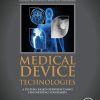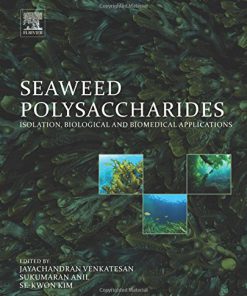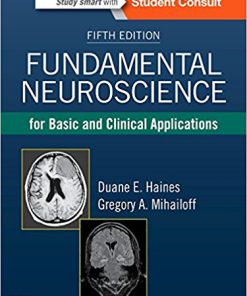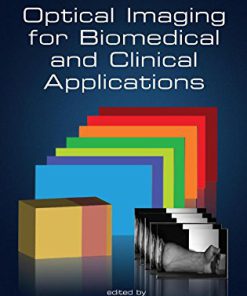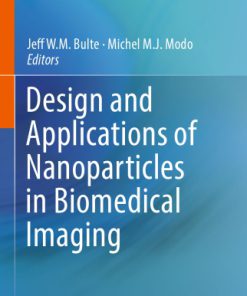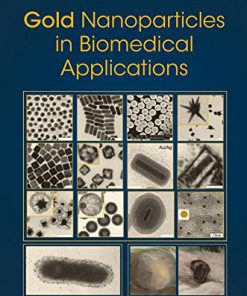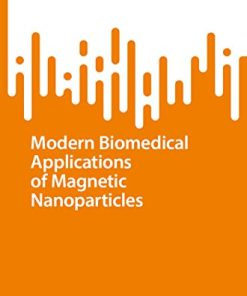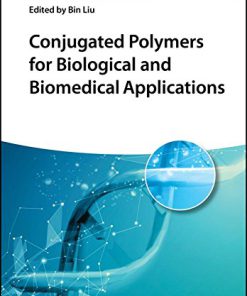Nanoparticles for Biomedical Applications Fundamental Concepts Biological Interactions and Clinical Applications 1st Edition by Eun Ji Chung 0128166635 9780128166635
$50.00 Original price was: $50.00.$25.00Current price is: $25.00.
Nanoparticles for Biomedical Applications: Fundamental Concepts, Biological Interactions and Clinical Applications 1st Edition by Eun Ji Chung – Ebook PDF Instant Download/DeliveryISBN: 0128166635, 9780128166635
Full download Nanoparticles for Biomedical Applications: Fundamental Concepts, Biological Interactions and Clinical Applications 1st Edition after payment.

Product details:
ISBN-10 : 0128166635
ISBN-13 : 9780128166635
Author: Eun Ji Chung
Nanoparticles for Biomedical Applications: Fundamental Concepts, Biological Interactions and Clinical Applications brings into one place information on the design and biomedical applications of different classes of nanoparticles. While aspects are dealt with in individual journal articles, there is not one source that covers this area comprehensively. This book fills this gap in the literature.
Nanoparticles for Biomedical Applications: Fundamental Concepts, Biological Interactions and Clinical Applications 1st Table of contents:
Chapter 1. A brief history of nanotechnology and introduction to nanoparticles for biomedical applications
Chapter 2. Nanoparticle behavior and stability in biological environments
2.1. Introduction
2.2. General considerations on the fabrication of nanoparticles
2.3. Characterization of colloidal stability
2.4. Concentration determination: dose matters
2.5. Determination of the protein corona
2.6. Stability in biologically relevant media
2.7. Correlating basic physicochemical properties with nanoparticle behavior in biological settings
2.8. Degradation in biological settings
2.9. Conclusions
Chapter 3. Active targeting and transport
3.1. Introduction
3.2. The strength of molecular interactions
3.3. Targeting agents
3.4. Active targeting strategies for various diseases
3.5. Conclusions and future outlook
Chapter 4. Passive targeting in nanomedicine: fundamental concepts, body interactions, and clinical potential
4.1. Introduction
4.2. What is “nanomedicine”?
4.3. Systemic nanomedicine and the journey of administered nanoparticles in the body
4.4. Active versus passive nanoparticle targeting strategies
4.5. Fundamental concepts of passive targeting strategies
4.6. Limitations of passive nanoparticle targeting
4.7. Nanoparticle–body interactions and biological barriers
4.8. Clinical potential of passive nanoparticle targeting
4.9. Perspective and conclusion
Chapter 5. Effects of shape, rigidity, size, and flow on targeting
5.1. Introduction
5.2. Effect of the size and shape on targeting
5.3. Effect of the carrier rigidity on targeting
5.4. Effect of flow on targeting
5.5. Summary
Chapter 6. Routes of administration for nanocarriers
6.1. Introduction
6.2. Parenteral delivery
6.3. Oral delivery
6.4. Pulmonary delivery
6.5. Nasal delivery
6.6. Transdermal delivery
6.7. Ocular delivery
6.8. Conclusions
Chapter 7. Challenges and barriers
7.1. Overview
7.2. Surface barriers
7.3. En-route barriers
7.4. Cellular barriers
7.5. Conclusions
Chapter 8. A pharmacokinetics primer for preclinical nanomedicine research
Variables studied in this chapter:
8.1. Introduction
8.2. Quantifying sample concentrations
8.3. Noncompartmental parameter estimation
8.4. Compartmental modeling of parameters
8.5. Interpreting the PK of drug carriers
8.6. Structure–function studies to optimize pharmacokinetic parameters
8.7. Conclusion
Chapter 9. Nanoparticle characterization techniques
9.1. Introduction
9.2. Electron microscopy
9.3. Elemental analysis
9.4. Particle counting
9.5. Zeta potential
9.6. Brunauer-Emmet-Teller
9.7. Concluding remarks
Chapter 10. Liposomal delivery system
10.1. Liposomes
10.2. Methods of preparation
10.3. Barriers and strategies of liposome drug delivery
10.4. Targeting ligands and coupling strategies
10.5. Conclusion
Chapter 11. Virus like particles: fundamental concepts, biological interactions, and clinical applications
11.1. Introduction
11.2. Imaging applications
11.3. Virus-based sensors
11.4. VLPs as drug delivery vehicles
11.5. Vaccines
11.6. Conclusion
Chapter 12. Engineering gold nanoparticles for photothermal therapy, surgery, and imaging
12.1. Introduction—The evolution of gold nanomedicine
Chapter 13. Magnetic nanoparticles
13.1. Introduction
13.2. Magnetite, maghemite, and substituted ferrites
13.3. Summary of magnetic properties
13.4. Common methods of synthesis
13.5. Clinical applications
13.6. Emerging applications
13.7. Concluding Remarks
Chapter 14. Carbon nanomaterials: fundamental concepts, biological interactions, and clinical applications
14.1. Introduction
14.2. Surface functionalization
14.3. Biological interactions
14.4. Therapeutic applications
14.5. Applications in bioimaging
14.6. Applications in biosensing/diagnosis and theranostics
14.7. Applications in tissue engineering and repair
14.8. Summary: future directions and main hurdles
Chapter 15. Quantum Dots
15.1. Introduction to quantum dots
15.2. Quantum dot synthesis
15.3. Quantum dot surface modification and bioconjugation
15.4. Quantum dot–based antibody probes
15.5. Quantum dot biosensors
15.6. Quantum dot—DNA probes
15.7. Quantum dot drug delivery systems for cancer therapy
15.8. Imaging of bacteria using fluorescent quantum dots
15.9. Application of quantum dots as an antimicrobial agent or antimicrobial delivery system
15.10. Conclusions and perspective
Chapter 16. Mesoporous silica nanoparticles: synthesis, properties, and biomedical applications
16.1. What are silica nanoparticles?
16.2. How are silica nanoparticles made?
16.3. Why are silica nanoparticles appropriate for medicinal use?
16.4. What kinds of cargo can MSNs deliver?
16.5. What applications are MSNs currently used for in medicine?
16.6. New types of silica NPs, MONs, and PMOs: what makes them different?
Chapter 17. Biomedical applications of cerium oxide nanoparticles: a potent redox modulator and drug delivery agent
17.1. Background
17.2. Diabetes
17.3. Cancer
17.4. Neurodegenerative diseases
17.5. CONP in other biomedical applications
17.6. Conclusions and future directions
Chapter 18. Polymeric Nanoparticles
18.1. Introduction
18.2. Common polymers in nanomedicine
18.3. Common methods of fabrication
18.4. Applications of polymeric nanoparticles
18.5. Concluding remarks
Chapter 19. Hydrophobically assembled nanoparticles: Self-assembled nanoparticles
19.1. Introduction
19.2. Peptide amphiphiles
19.3. Nucleic acid constructs
19.4. Block copolymer nanoparticles
19.5. Dendrimers
Chapter 20. Electrostatically driven self-assembled nanoparticles and coatings
20.1. Introduction
20.2. Nanoscale Homopolymer Polyelectrolyte Complexes
20.3. Block Copolymer Polyelectrolyte Complex Micelles
20.4. Layer-by-layer self-assembled nanoparticles for biomedical applications
20.5. Conclusion
Chapter 21. Nanoemulsions
21.1. Introduction
21.2. Nanoemulsion preparation
21.3. Nanoemulsion stability and rheology
21.4. Nanoemulsion formulations for hydrophobic drugs
21.5. Nanoemulsions as a template for hydrophobic drug nanocrystals
21.6. Nanoemulsions for advanced material synthesis in biomedical applications
21.7. Conclusion and future outlook
Chapter 22. The role of artificial intelligence in scaling nanomedicine toward broad clinical impact
22.1. Introduction
22.2. The role of digital therapeutics
22.3. Conclusions
People also search for Nanoparticles for Biomedical Applications: Fundamental Concepts, Biological Interactions and Clinical Applications 1st :
nanoparticles for biomedical applications
magnetic nanoparticles for biomedical applications
iron oxide nanoparticles for biomedical applications
microfluidic formulation of nanoparticles for biomedical applications
zinc oxide nanoparticles for biomedical applications
Tags: Nanoparticles, Biomedical Applications, Fundamental Concepts, Biological Interactions, Clinical Applications, Eun Ji Chung
You may also like…
Engineering
Seaweed polysaccharides : isolation, biological and biomedical applications 1st Edition Anil
Medicine
Fundamental Neuroscience for Basic and Clinical Applications Duane 0323512232 9780323512237
Engineering
Optical Imaging for Biomedical and Clinical Applications 1st Edition Ahmad Fadzil Mohamad Hani
Relationships & Lifestyle - Health - Diseases & Disorders
Gold Nanoparticles in Biomedical Applications 1st Edition Dykman
Biology and other natural sciences - Molecular
Modern Biomedical Applications of Magnetic Nanoparticles Mari 9789811971044
Science (General)


